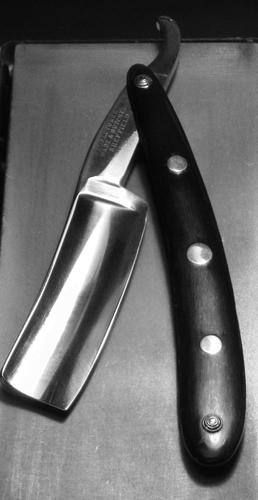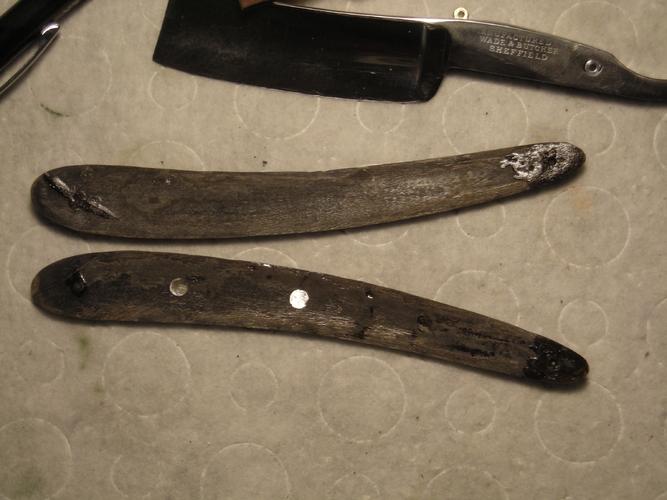Results 1 to 10 of 29
Thread: Inlays in horn
Hybrid View
-
07-31-2018, 10:42 PM #1

Of course this could only be done with metal inlay pieces. And thin inlay pieces too like little charms that are mianly hollow. But then you might warp or damage the shape of the charm using heat and pressing.
It's just Sharpening, right?
Jerry...
-
07-31-2018, 11:48 PM #2

Sorry about that, I should have specified "metal" inlays.
The topic of inlays has been somewhat skipping across my mind like a stone on a pond for a while now.
Most of the designing I do takes place in my mind before I draw out and then execute any sort of work.
There are some ideas that are forming in regard to inlays, and I want to get a more clear idea of how it was done.
One concept is creating a "structural" adhesion without the need for any glue or pins.. and I'm wondering if that was what they achieved... ?
Would probably only work with a scale material that can melt, I think.
-
08-01-2018, 03:41 AM #3

The subject has come up before.
One method that was used to inlay a metal ( lead/ pewter ) inlay in horn and bone and plastic pocket knife scales was to have a/ or two pins attached to the back of the inlay that were pinned on the back side of the scale.
Another was to press a soft metal into the relieved area ( the opening was undercut around the edges, with a decorative punch.
There are some that are both methods combined.
There must be more ways also.
Have fun!
~RichardBe yourself; everyone else is already taken.
- Oscar Wilde
-
The Following User Says Thank You to Geezer For This Useful Post:
MikeT (08-01-2018)
-
08-01-2018, 03:48 AM #4

I have something interesting. I will try to share tomorrow!
-
08-01-2018, 12:47 PM #5
-
08-01-2018, 01:46 PM #6

Thanks Richard!
I've considered using independent pins or pins that are a part of the back of the inlay.
When you say "undercut" does that mean the edge goes in to make a slight inverted lip to catch the edge of the inlay? ... this is what I imagined.
Either that or possibly the inlay could have a bevel on the top edge and the horn could be heated and pressed down and over that bevel to lock the inlay in place..
Just ideas, I realize without the knowledge I could be commenting on something that is already well known.
-
08-01-2018, 02:36 PM #7

I could not find pics. I should have to take some more as I get home...
Anyway, ran across this one. The inlays go clean through the horn....


-
-
08-01-2018, 04:00 PM #8

Oooo I like that one! Looks fairly easy to do.. just drill the holes, clean them up, and tap the metal rods in.
Hey you know what would be cool, if you guys have different examples of various forms of inlays. These rod style inlays are a good example of variability..
Edit:
I thought about tapping in a rod like that at the wedge in place of a standard pin. Have seen that before.
Great concept to work with!Last edited by MikeT; 08-01-2018 at 04:02 PM.
-
08-04-2018, 02:17 AM #9

Not really inlays, are they?

A long-ago member replicated those scales and deemed them junk. Did an awesome job!
I begged for them on customs and restos.
He sent them to me from Europe!


 80Likes
80Likes LinkBack URL
LinkBack URL About LinkBacks
About LinkBacks








 Reply With Quote
Reply With Quote

